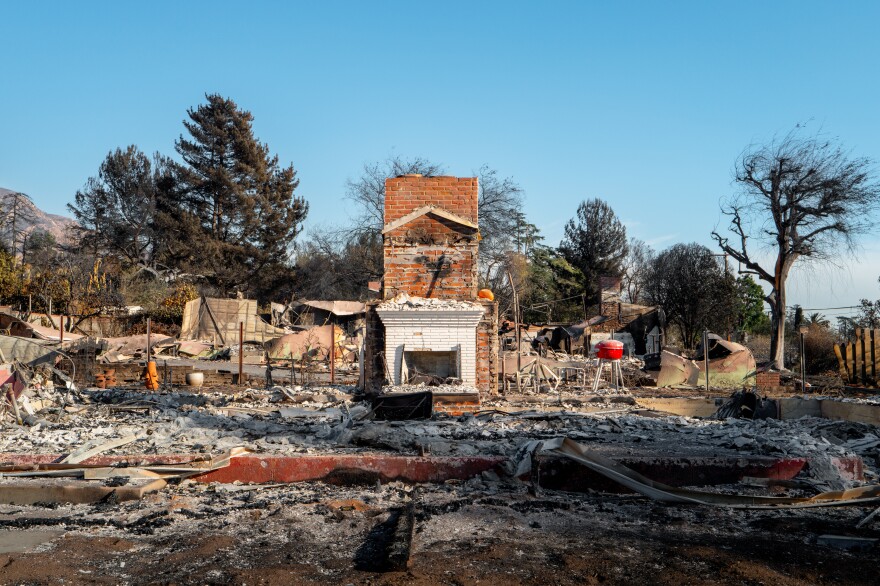Truth matters. Community matters. Your support makes both possible. LAist is one of the few places where news remains independent and free from political and corporate influence. Stand up for truth and for LAist. Make your year-end tax-deductible gift now.
Researchers tested sandboxes and street dust for lead after the Eaton Fire. Here's what they found

Late last month, before the rains arrived, USC professor Seth John traveled through foothill neighborhoods devastated by the Eaton Fire, gathering street dust to test for lead. Another USC professor, Sam Silva, visited public parks and preschools, sampling sandboxes he and his friend's kids played in.
Concerns have arisen following the deadly fire after thousands of older buildings, where lead paint is often present, burned, raising questions about how far ash, laden with toxic heavy metals, has spread across the region.
What the researchers found
John and his graduate students tested 19 samples gathered every half mile or so, from La Cañada Flintridge to Monrovia. Some from right in front of burned homes and others from neighborhoods where homes were spared, but blanketed in wildfire ash. The result? They found a lot of variability between the sites.
Somewhat predictably, the street dust from the middle of Altadena, which saw the worst damage, showed high levels of lead, with samples ranging from just above the California EPA soil screening limit of 80 parts per million to more than 20 times that. Meanwhile, material gathered from nearby neighborhoods had barely any lead present.
" We were actually very relieved to discover that although there were higher amounts of lead in this dust, it really was not nearly as concerning and not nearly as toxic as we had feared it might be," John said.
It's not uncommon to find high levels of lead contamination in urban areas from things like leaded gasoline and industrial sources. John also ran tests using soil from around the USC campus and got similarly high measurements.
Of the seven playground samples that have been tested, lead levels were low to non-existent.
“The playgrounds came from me texting other parents asking where do you take your kids that has sand,” Silva said. “As a scientist, this result is not remarkably surprising, but as a parent I was deeply relieved.”
Putting the tests into context
There's been a dearth of information about how far toxic heavy metals have spread following the fires, and tests like these are important to help residents understand potential risk. If you take your kids to parks in these areas, you may feel a bit more comfortable letting them play in the sandboxes.
However, far more testing needs to be done, especially in areas in which homes burned — not just for lead, but an array of heavy metals including chromium and arsenic, the latter of which is used to make wood rot resistant.
"Lead is just one of the heavy metals," said Sanjay Mohanty, professor of civil and environmental engineering at UCLA. "When you have chromium and lead together, it's just the toxicity is much more now because your body's overwhelmed with so many metals."
After debris and ash are cleared, Mohanty recommends people do comprehensive soil testing across their properties, with multiple samples gathered and averaged so that they can get a complete picture of just how safe the dirt around them is.
The rains should help wash away a lot of the street dust, though John from USC will be heading out after the storms to run another series of tests to monitor the changes in heavy metal concentrations.












